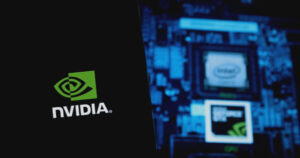Welcome to the Extreme Investor Network, where we bring you the latest insights and updates on the world of cryptocurrency, blockchain, and advanced technologies. Today, we are excited to dive into NVIDIA’s cutting-edge computing systems and their impact on the evolution of physical AI in industries such as manufacturing and robotics.
NVIDIA has introduced a revolutionary three-computer solution that promises to reshape the landscape of AI in physical systems. By enhancing training, simulation, and inference capabilities, these advanced systems are set to drive significant breakthroughs in the integration of artificial intelligence into industrial applications.
The Rise of Multimodal, Physical AI
With the advent of NVIDIA’s three-computer solution, AI is entering a new era of sophistication and applicability. From simple image recognition to the realm of Software 2.0, where machine learning models run on GPUs, NVIDIA is pushing the boundaries to enable robots to perceive, understand, and interact with their environment in three dimensions. This shift towards physical AI in sectors such as transportation, logistics, and manufacturing is poised to bring about transformative changes.
The Next Frontier: Humanoid Robots
Humanoid robots, designed to operate efficiently in diverse environments, are projected to dominate the robotics market in the coming years. Global efforts to develop robots capable of seamless adaptation without extensive modifications have fueled this growth. By leveraging NVIDIA’s development platforms for multimodal models and scalable simulations, companies are optimizing robot skills in virtual environments before real-world deployment, setting the stage for a new wave of autonomous systems.
Three Computers to Develop Physical AI
NVIDIA’s innovative three-computer architecture, comprising supercomputers for training AI models, NVIDIA Omniverse for simulation and development, and NVIDIA Jetson Thor for runtime deployment, is at the forefront of advancing physical AI capabilities. These integrated systems support the creation of advanced robotics capable of complex tasks like 3D perception and autonomous operation, while also reducing costs and risks associated with physical data acquisition.
Building the Next Wave of Autonomous Facilities
Industries like manufacturing and logistics are primed to benefit significantly from NVIDIA’s advancements in physical AI. Companies like Foxconn and Amazon Robotics are already leading the charge in leveraging digital twins for planning and optimization, enhancing the efficiency of autonomous facilities. The digital twin framework, powered by NVIDIA’s Omniverse, enables comprehensive simulation and validation of robotic systems, ensuring seamless integration and operational excellence.
Empowering the Developer Ecosystem With NVIDIA Technology
NVIDIA’s technology is empowering a global ecosystem of developers and robotics companies to create innovative AI applications and deploy advanced robotic solutions at an accelerated pace. Leading players like Universal Robots and Boston Dynamics are leveraging NVIDIA’s platforms to enhance their offerings and drive progress in the era of physical AI. As NVIDIA’s three-computer solution continues to drive advancements in various sectors, we are witnessing the dawn of a new generation of intelligent machines.
Stay tuned to the Extreme Investor Network for more insights and updates on the evolving world of cryptocurrency, blockchain, and advanced technologies. Join us as we delve deeper into the latest trends and innovations shaping the future of investment opportunities.

